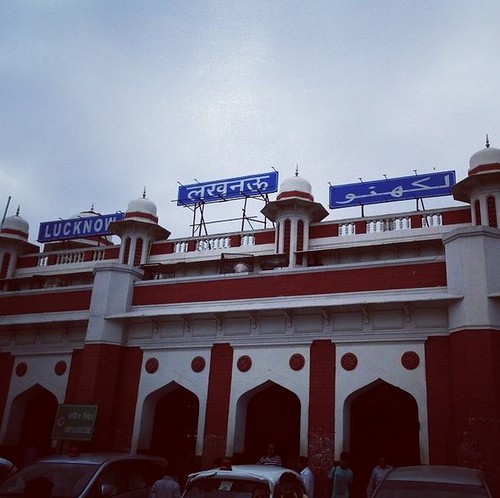By Kaleem Kawaja,
In my recent visit to India to various cities, I came across a lot of brash people in a hurry to appear modern and in a hurry in general. In their hurry, they forget to be polite and in their talk they are abrupt and forget to nuance their expressions.
And even the names of localities are modernised. But when I landed at the bustling railway station in Lucknow, my ears were startled to hear the coolie say, “Hazrat kahan jaaein gay aap; Chaar Bagh, Qaisar Bagh,, Aliganj, Nishat Ganj, Nakhhas, Husainabad…..”

When I asked the rickshawala the fare to go to my destination, he said, “Huzoor, jo marzi ho aap ki”. As the rickshaw was passing through a busy street in the traffic jam, I heard a street hawker selling agarbatti calling out to people sitting in a bus, “aap hazraat jo is bus main raunaq afroz hain zaraa hamari agarbattiyon ke taraf bhi dekhiye, inki khusboo to lajawaab haiy.”
I really could not believe such an abrupt change towards tahzeeb, sharafat and old world charm coming from ordinary street people. I felt as though I was transported to Scarlett O’hara’s Old South and “Gone with the Wind!”
During the day, as my sister took us shopping to Lucknow downtown, still appropriately called Hazratgunj, I came across several modern looking malls.
But the most interesting was the visit to a ladies’ garment shop called Nemat-e-Ada. The sign on the doorway said, “Ada an ecstasy of Chikan; Ada the ada of Lucknow; the ada of Ada”. As I entered the spacious store, I saw several poster-size paintings of old Lucknow and of the style of dress of ladies of Lucknow from the 1800s.
Soon enough my attention was drawn to the classical Avadh culture ghazals coming from the overhead sound system with ghazals such as “Dil cheez kiya haiy aap meri jaan lijye…”, “inhi logon nay lay liya dupatta mera…” etc etc. I was there for one hour and I did not hear anything but these refined ghazals.
The store specializes in the renowned ‘chikan’ garments. Descending right from the Mughal Empire and the Awadhi kingdom of nawabs, though the monarchy has departed, the refinement of Chikankaari for ladies garments is blooming. Most salesman/saleswomen were non-Muslim but were speaking in chaste Urdu with the tahzeeb of the bygone era, showing garments with tailoring with unique names such as “bakhia, ulti- bakhia, phanda, jaali, katau, haath-kati, haath-kangan, khas-patti” et al.
Of course they offered chai in cup and saucer (not mug or styrofoam cup) and chaandi-ka-waraq (silver foil) wrapped paan.
They explained the Lucknavi tailoring art form of “jugalbandi of chikankaari and zardozi” (fusion of two styles of stitching” ) as the timeless refined aesthetic taste of the nobles. Chikankari is a special form of embroidery that is not only most exquisite; it is still being produced in Lucknow only. (The prices of chikan dresses ranged from Rs 4,000 to Rs 12,000, with the most expensive, being a saari priced at Rs 1 lakh that instantly takes you to jannat (if there is one)!
As I departed from Nemat-e-Ada I could not stop thinking where has all of our great Avadhi and Ganga-Jamni tahzeeband way-of-life, where the Muslim culture was such an important lifeblood gone? Where has the illustrious Indian Muslim qaum gone?
I left Lucknow and travelled to another city and visited a family that had someone passed away recently. When I said that I would like to visit the grave of the deceased, a Muslim youth told me “Kul subah nau bajey aapko unki ‘samadhi’ pur lay jaaon gaa”.
Needless to say that hearing the word samadhi for mazaar or qabar tore through my senses that had just been uplifted in Lucknow!!!
(Kaleem Khwaja is the Executive Director of Association of Indian Muslims of America (AIM).)
